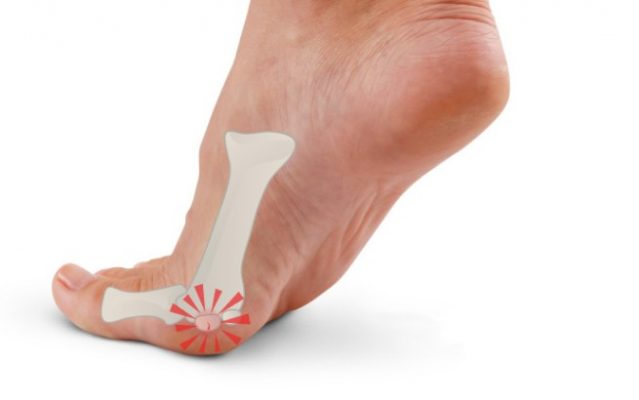 A common type of overuse injury of the foot is called Metatarsalgia. More specifically, the term ‘Metatarsalgia’ refers to pain and inflammation in the ball of one’s foot. Interestingly, it is usually viewed as a symptom of other feet conditions, rather than being categorised as a specific condition.
A common type of overuse injury of the foot is called Metatarsalgia. More specifically, the term ‘Metatarsalgia’ refers to pain and inflammation in the ball of one’s foot. Interestingly, it is usually viewed as a symptom of other feet conditions, rather than being categorised as a specific condition.
What is Metatarsalgia?
Metatarsalgia, a term used broadly by physicians and other health practitioners to refer to inflammation and or pain experienced on the forefoot, is the most frequent cause of Ball of foot pain.
Most people who are prone to it are those who have participated in activities like running and jumping. Other causes may include foot deformities, and loose or tight shoes. The chief cause of this pain however is overloading the metatarsal and other structures around them because of abnormal leg functioning. This condition can be corrected by full-length functional foot orthotics, changing the way weight is borne by the feet, proper choice of footwear, and relieving the injured part by proper offloading techniques.
Symptoms of metatarsalgia can include:
- Sharp, burning, and aching pain on the part of the sole just behind your toes
- Pain that worsens when you stand or engage in any physical activity but subsides when you stop.
- Sharp or shooting pain, tingling, and numbness in your toes
- A feeling of having a pebble in your shoe
Causes of Metatarsalgia
A single factor can lead to this condition, but in most cases, the following factors may contribute:
Intense activity/ training– people who engage in a lot of exercise, especially long-distance runners, face the risk of suffering from metatarsalgia. People who participate in high-impact activities also face this danger primarily because the feet absorb most of the pressure. This condition is most dominant when one wears shoes that don’t fit well.
Certain foot shapes– conditions like having a long arch can cause this problem. Similarly, having the second toe longer than the first one may cause more pressure than required to be cast on it.
Foot deformities– high heeled shoes or those that are too small/narrow may cause feet to curl downwards or cause a swollen bump at the base of the first metatarsal, thus causing metatarsalgia.
Excess weight– when we move, most of the body’s weight is moved to the forefoot. This means the weight goes to the metatarsals. When one has more weight, he or she is more prone to get this condition.
Poor Footwear– among women, high heeled shoes are the major cause. They transfer most of their weight to the toes. Shoes that lack support, with a narrow toe box, or those that lack padding can also cause metatarsals.
Stress fractures– pain caused by small fractures in the toe bones may change the way you distribute weight on your foot.
Morton’s Neuroma– is a noncancerous growth of fibrous tissues between the third and fourth metatarsal heads. Its symptoms are similar to those of metatarsalgia. It may as well contribute to metatarsal stress.
Metatarsalgia Risks
- Those who participate in high impact sports like jumping and running.
- Those who wear shoes that don’t fit well, like high heels, tight or loose shoes, and shoes with spikes.
- Obese or overweight people.
- Those with other foot conditions like hammertoe and calluses.
- Those with inflammatory arthritis, for example rheumatoid arthritis.
If metatarsalgia is not treated, it may cause pain in other parts of your body, for example the opposite foot, the same foot, the hip, and the lower back, mostly due to limping.Contact us on 03 9077 5915 for further assessment and treatment.
